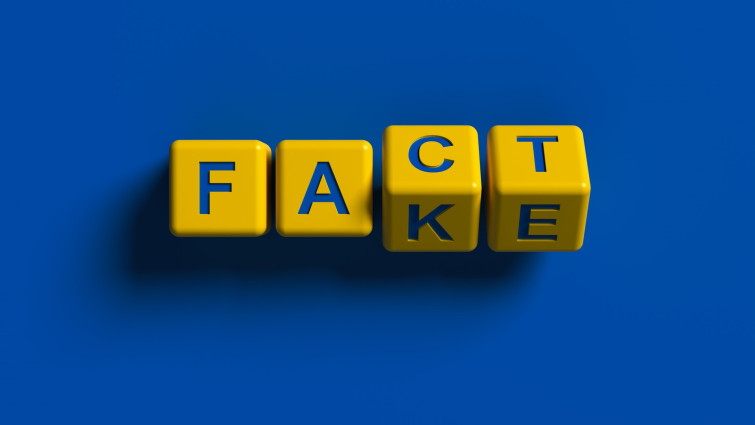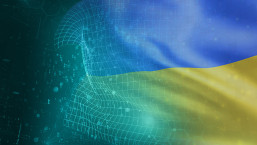Every day brings a deluge of news content that competes for our attention and spans everything from politics, health, sports, and climate change to the war in Ukraine. The endless amount and breadth of information – which is instantly available as news articles, video clips, photos, or other media on news websites, social media platforms, television, radio and other sources – can, and often does, feel overwhelming. Is it any wonder that so many of us struggle to cope with information overload and even with discerning facts from fiction online?
Recently, much of the global news cycle has been rightly focused on the conflict in Ukraine. It started with satellite images of army movements alerting of the risk of a possible Russian invasion. Then, in the small hours of February 24th, grisly footage began to pour in from Ukraine as citizens took to social media to post videos and photos of tanks rolling into streets and rockets falling from the skies, leaving destruction in their wake.
Ever since, we’ve all been able to watch the war play out on our phones in previously unseen detail; it’s not for nothing that the war has been nicknamed the “first TikTok war”. The people of Ukraine can use the reach of platforms like TikTok, Twitter and Instagram to show the world what they’re going through. Indeed, almost overnight, some of these apps went from featuring dancing videos to showing war scenes and appeals for humanitarian support, attracting countless views and shares in the process. But both sides of the war have access to these platforms, which then become a digital battleground to influence millions of people worldwide.
But do we always know what we are really looking at?
Back in 2008, after its successful coverage of the 2006 FIFA World Cup that included videos and photos taken by football fans, CNN launched iReport, a “citizen journalist” website. Anyone could now upload their own content online for the big audience. At the time, executive VP of CNN News Service Susan Grant guaranteed that from that moment, “the community will decide what the news is”, clarifying that the publications would be “completely unvetted”.
CNN’s belief was based on the idea that citizen journalism is “emotional and real”. By 2012, 100,000 stories had been published and 10,789 had been “vetted for CNN, which means they were fact-checked and approved to be broadcast”. But does that mean the other 89,211 were real? CNN iReport was closed in 2015. Fast forward to 2022, and misinformation is one of the biggest problems facing society worldwide.
What we believe is not necessarily real
According to MIT research that was published in 2018 and analyzed news shared on Twitter, “falsehood diffuses significantly farther, faster, deeper, and more broadly than the truth”, even after bots are removed and only real human interactions are considered. The results are striking to the point that it concluded that “falsehoods were 70% more likely to be retweeted than the truth”.
A handful of reasons explain our complex social reality. Indeed, at the end of the day the underlying problem may be something we are all victims of: cognitive bias. While it may be useful for our daily lives, if only by allowing us to remember previously learned processes and recognize familiar situations, it may leave us susceptible to mental shortcuts and blind spots. A conversation between two people on both sides of the war in Ukraine is a clear example: both sides believe they’re acting rationally and accuse each other of being biased and of not grasping the complexities of the reality. From this point on, each will be more open to consume news that confirms their perspective – even if the news is fake.
READ NEXT: Deepfakes: When seeing isn’t believing
While we generally surround ourselves with people with whom we share the same world views, on social media this tendency is even more pronounced and make us way more likely to take part in a discussion. Online we are presented with a filtered reality, built by an algorithm that shapes our virtual circumstance and feeds us with validation, whatever ideas we have. On social media, we are inside of our own bubble, the place where we are always right. A Facebook whistleblower Frances Haugen has said in the British Parliament that “anger and hate is the easiest way to grow on Facebook”.
The enormous amount of misinformation, however, is not a 21st century trend. Propaganda, misinformation and fake news have polarized public opinion throughout history. Nowadays, however, it is instant and easily sharable.
A recent article in Nature reflected on the experience of the 1918 pandemic and what risks a future outbreak could have. The author, Heidi Larson, a professor of anthropology in the London School of Hygiene and Tropical Medicine, predicted that “the next major outbreak will not be due to a lack of preventive technologies”, but “the deluge of conflicting information, misinformation and manipulated information on social media”.
Trolls and bots lead the way
When in 2018 Larson wrote about spreading misinformation, she used a term we’ve all got acquainted to recently: super-spreaders, just like with viruses. An image that explains how the internet trolls “stir up havoc by deliberately posting controversial and inflammatory comments”.
But while some of them are just bored individuals using the invisibility cloak of internet, others do this as a job, inflaming public opinion and disturbing social and political processes. This was also one of the conclusions of two Oxford researchers that discovered several examples of how both government and private companies manage “organized cyber troops”. These battalions of trolls and bots use social media to shape people’s minds and amplify “marginal voices and ideas by inflating the number of likes, shares, and retweets”.
So how does social media deal with this?
Harder than knowing the people behind fake news is understanding what we can do to manage the content published on online platforms. For the past decade, The New Yorker wrote in 2019, Facebook had rejected notions that it was responsible for filtering content, instead treating the site as a blank space where people can share information. Since then, fake news has not only impacted election results, but also brought harm to people in real life.
Twitter, Telegram, and YouTube have also been heavily criticized for their approach to misleading content, with some governments requiring more responsibility and even considering pushing regulation over these services for the spread of banned content or false and extremist ideas.
READ NEXT: Deepfakes – the bot made me do it
In January 2022, fact-checking websites from all over the world addressed YouTube with an open letter, alerting the world’s biggest video platform of the need to take decisive action, mainly by “providing contexts and offer debunks”, rather than just deleting video content. The letter also addressed the need for “acting against repeated offenders” and applying these efforts “in languages different from English”.
What can be done?
Larson says “no single strategy works”, suggesting a mix between educational campaigns and dialogue. And while some countries do well on digital literacy and education, others don’t. The disparity is big, but we all converge on the same shared virtual space where no one really wants to dialogue, listen, or engage.
But if digitally literate people are “more likely to successfully tell the difference between true and false news”, everyone is just as equally likely to share fake news because of how simple and immediate “a click” is. This was the conclusion of another recent MIT study, making the case for other types of tools.
This is where fact-checking platforms come in, researching and evaluating the quality of information included in a news piece or a viral social media post. However, even these resources have their own limitations. As reality is not always straightforward, most of these websites follow a barometer-like pointer ranging from “false” to “mostly false”, “mostly true” to “true”. Likewise, the validity of this research can also be discredited by those who don’t see their ideas confirmed, giving fakes an almost endless lifespan.
But we also have a role to play when it comes to discerning the real from the fake, and in the context of a war, this 'individual work' takes on an even greater importance. Watch the video by ESET Chief Security Evangelist Tony Anscombe to learn a few tips for telling fact from fiction.






